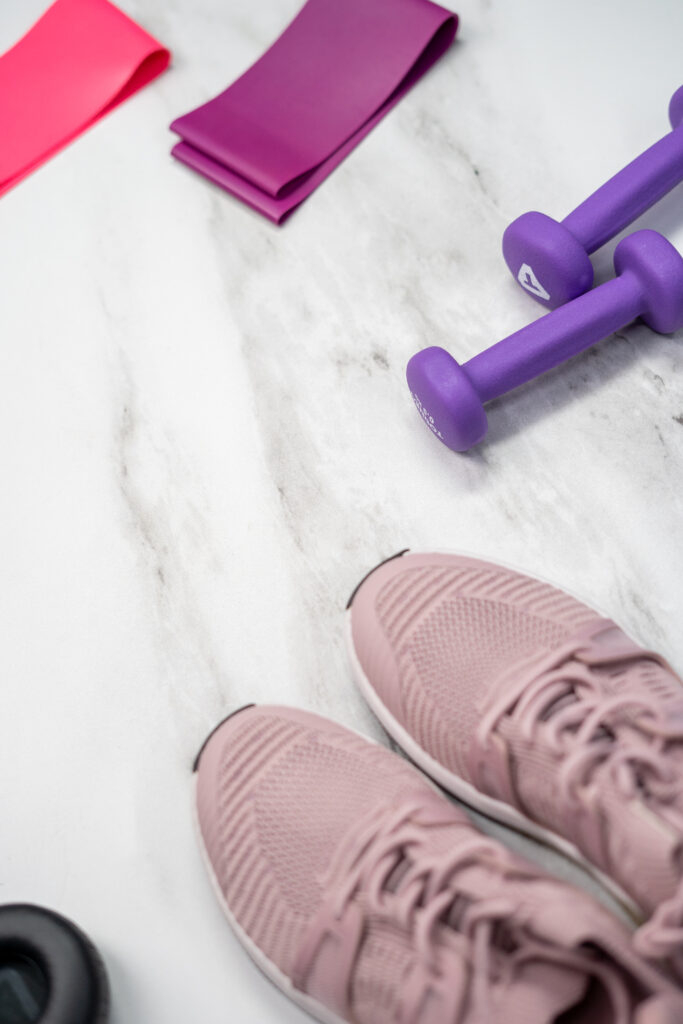How To Lose 10 Kg In 10 Days?
Imagine a world where it’s possible to shed 10 kilos in just 10 days – sounds too good to be true, right? Well, buckle up because we’re about to reveal some incredible tips and tricks that will help you achieve this ambitious goal. Whether you’re gearing up for a big event, want to feel confident in your own skin, or simply want to kickstart a healthier lifestyle, this article will guide you on the path to shedding those stubborn kilos. Get ready to embark on a transformative journey where you’ll learn how to lose weight effectively and sustainably in just 10 days. It’s time to take control of your health and unleash the best version of yourself!

Setting Realistic Goals
Understanding Your Current Weight and Body Composition
Before embarking on a weight loss journey, it is essential to have a clear understanding of your current weight and body composition. This knowledge will provide a baseline for setting realistic goals and monitoring progress. You can determine your weight using a reliable scale and assess your body composition through methods like skinfold calipers or a DEXA scan.
Determining the Optimal Weight Loss Rate
While it may be tempting to lose weight quickly, it is important to prioritize your health and set realistic goals for sustainable weight loss. A safe and effective rate of weight loss is generally considered to be around 0.5-1 kg per week. This means that aiming to lose 10 kg in 10 days may not be realistic or healthy. It is advisable to consult with a healthcare professional or registered dietitian to determine an appropriate and individualized weight loss rate.
Creating a Realistic Timeframe
Instead of focusing on losing a specific amount of weight in a short period, it is more beneficial to set realistic timeframes for your weight loss journey. This allows for a gradual and sustainable approach, improving your chances of successfully reaching and maintaining your weight loss goals. Depending on your starting weight, lifestyle factors, and personal circumstances, a time frame of several months to a year may be more appropriate for achieving significant weight loss.
Creating a Calorie Deficit
Understanding the Role of Calories in Weight Loss
Weight loss occurs when there is a calorie deficit, which means you are consuming fewer calories than your body needs for daily activities and functions. To lose weight, it is necessary to create a calorie deficit by reducing calorie intake and increasing calorie expenditure through physical activity. However, it is important to strike a balance between creating a calorie deficit and ensuring your body receives adequate nutrition.
Calculating Your Daily Calorie Needs
To determine how many calories you should consume each day, you can calculate your Basal Metabolic Rate (BMR) using an online calculator or by consulting a healthcare professional. Your BMR represents the number of calories your body needs to maintain basic bodily functions at rest. You can then factor in your activity level to estimate your daily calorie needs.
Reducing Calorie Intake
To create a calorie deficit, you can start by reducing your calorie intake. This can be achieved by making healthier food choices, opting for lower-calorie alternatives, and practicing portion control. It is important to focus on nutrient-dense foods that provide essential vitamins, minerals, and macronutrients while keeping the calorie content in check.
Choosing Nutrient-Dense Foods
While it is tempting to rely on low-calorie processed foods or crash diets, it is essential to prioritize nutrient-dense foods for sustainable weight loss. Nutrient-dense foods are rich in vitamins, minerals, and other beneficial compounds while remaining relatively low in calories. Focus on incorporating fruits, vegetables, whole grains, lean proteins, and healthy fats into your meals to ensure you meet your nutritional needs while losing weight.
Maintaining a Balanced Diet
Setting Macronutrient Ratios
While calorie intake is crucial for weight loss, it is also important to maintain a balanced diet by considering the distribution of macronutrients. The ideal macronutrient ratios may differ depending on individual needs and preferences, but a general guideline is to aim for a balanced intake of carbohydrates, proteins, and fats. This ensures that your body receives the necessary fuel and nutrients for optimal functioning during the weight loss process.
Including Lean Proteins in Your Meals
Protein is an essential nutrient for weight loss as it helps keep you feeling full and supports muscle growth and repair. Incorporate lean protein sources such as chicken breast, fish, tofu, beans, and Greek yogurt into your meals to meet your protein needs. Including protein with each meal can also help stabilize blood sugar levels and prevent unhealthy snacking.
Incorporating Healthy Fats
Contrary to popular belief, not all fats are bad for you. Healthy fats are essential for bodily functions and can help promote satiety. Include sources of monounsaturated and polyunsaturated fats, such as avocados, nuts, seeds, and olive oil, in your diet. However, remember that fats are calorie-dense, so portion control is important.
Consuming Complex Carbohydrates
Carbohydrates are a vital source of energy, but not all carbohydrates are created equal. Opt for complex carbohydrates like whole grains, legumes, and vegetables, as they provide more fiber and nutrients compared to refined carbohydrates. These foods can help you feel fuller for longer and stabilize your blood sugar levels, reducing the likelihood of unhealthy snacking.
Ensuring Sufficient Micronutrient Intake
In addition to macronutrients, it is important to consider your micronutrient intake during weight loss. Micronutrients, such as vitamins and minerals, play a critical role in various bodily functions. Ensure you consume a wide variety of fruits, vegetables, and whole foods to meet your micronutrient needs. Additionally, it may be beneficial to consult a registered dietitian to ensure you are meeting your specific nutrient requirements during the weight loss process.
Planning Your Meals
Creating a Daily Meal Plan
Meal planning is a key component of successful weight loss. By planning your meals in advance, you can ensure you have nutritious options available and avoid impulsive food choices. Create a weekly meal plan that includes a balance of macronutrients, as well as a variety of colorful fruits and vegetables.
Including a Variety of Foods
To ensure you receive a wide range of nutrients, it is important to include a variety of foods in your daily meal plan. Incorporate different types of fruits, vegetables, whole grains, lean proteins, and healthy fats to create a diverse and balanced diet. Experiment with different recipes and flavors to keep meals interesting and enjoyable.
Portion Control
Even with healthy food choices, portion control is crucial for weight loss. Becoming mindful of portion sizes can help you avoid overeating and ensure you are in a calorie deficit. Use measuring cups, food scales, or visual cues to help determine appropriate portion sizes. Remember that it is not only the types of food you consume but also the quantity that matters.
Managing Snacks
Snacks can be an important part of supporting your weight loss goals, as they can help keep hunger at bay and prevent overeating during meals. However, it is important to choose healthy snacks and practice portion control. Opt for nutrient-dense snacks like fruits, vegetables with hummus, Greek yogurt, or a handful of nuts. Additionally, be mindful of emotional or mindless snacking and try to address the underlying triggers.

Staying Hydrated
Understanding the Importance of Hydration
Hydration is often overlooked but plays a crucial role in weight loss. Staying hydrated can help control appetite, support digestion, and optimize metabolism. It is important to drink an adequate amount of water throughout the day to maintain hydration levels and support overall health.
Setting Daily Water Intake Goals
While individual water needs may vary, a general guideline is to aim for at least 8 cups (2 liters) of water per day. However, factors such as climate, physical activity, and individual differences may require adjustments to this guideline. Pay attention to your body’s signals of thirst and aim to drink water consistently throughout the day.
Incorporating Hydrating Foods
In addition to drinking water, you can incorporate hydrating foods into your diet to support hydration. Foods with high water content, such as cucumber, watermelon, strawberries, and soups, can contribute to your overall fluid intake. These foods also often provide essential vitamins and minerals, making them a valuable addition to your weight loss journey.
Regular Physical Activity
Choosing Suitable Exercise Types
Regular exercise is an important component of any weight loss plan. Choose exercise types that you enjoy and that align with your fitness level and any existing health conditions. The key is to engage in activities that elevate your heart rate, promote muscle strength, and contribute to overall calorie expenditure.
Setting Realistic Exercise Goals
When starting an exercise routine, it is essential to set realistic goals. Gradually build up your exercise duration and intensity to avoid burnout or injury. Aim for a mix of cardiovascular exercise, such as brisk walking, cycling, or swimming, and strength training exercises, like weightlifting or bodyweight exercises. Consulting a fitness professional can help create a tailored exercise plan that supports your weight loss goals.
Designing an Exercise Schedule
To make physical activity a consistent part of your routine, it is helpful to create an exercise schedule. Choose specific days and times that work best for you and incorporate both structured workouts and activities that you enjoy. This will help create a sense of consistency and make it easier to prioritize exercise amidst other commitments.
Incorporating Cardiovascular and Strength Training
To optimize weight loss, it is beneficial to incorporate both cardiovascular exercise and strength training into your routine. Cardiovascular exercises elevate your heart rate and burn calories, while strength training helps build lean muscle mass. A combination of both types of exercise can enhance your overall fitness, increase your metabolism, and support sustainable weight loss.

Getting Enough Sleep
Understanding the Link Between Sleep and Weight Loss
Sleep plays a crucial role in weight management and overall health. Lack of sleep can disrupt hormones that regulate appetite and hunger, leading to increased cravings and poor food choices. It can also affect metabolism and energy levels, making it harder to engage in physical activity. Prioritizing quality sleep is essential for supporting your weight loss goals.
Recognizing the Importance of Quality Sleep
Quality sleep refers to both the duration and the overall restfulness of your sleep. Aim for 7-9 hours of uninterrupted sleep each night to allow your body to recover and regenerate. Create a sleep environment that is conducive to rest, including a dark, quiet, and comfortable setting.
Establishing a Consistent Sleep Routine
Healthy sleep habits can be cultivated by establishing a consistent sleep routine. Set a regular bedtime and wake-up time that allows for an adequate amount of sleep each night. Prioritize winding down before bedtime by avoiding stimulating activities like screen time and caffeine consumption. Engage in relaxing activities such as reading, taking a warm bath, or practicing deep breathing exercises to signal to your body that it is time to sleep.
Managing Stress
Recognizing the Impact of Stress on Weight Loss
Stress can have a significant impact on weight loss efforts. When you are stressed, your body releases cortisol, a hormone that can increase appetite and promote fat storage, particularly around the abdominal area. Additionally, stress can lead to emotional eating and cravings for unhealthy foods. Managing stress is therefore crucial for successful weight loss.
Incorporating Stress-Relieving Activities
To manage stress effectively, it is important to incorporate stress-relieving activities into your daily routine. Engage in activities that you enjoy and that help you relax, such as practicing yoga, meditating, spending time in nature, or engaging in creative hobbies. Find what works best for you and make time for these activities regularly.
Practicing Relaxation Techniques
In addition to stress-relieving activities, practicing relaxation techniques can be helpful in managing stress. Deep breathing exercises, progressive muscle relaxation, and guided imagery are examples of relaxation techniques that can help reduce stress levels. Experiment with different techniques and incorporate them into your daily routine to promote overall well-being and support your weight loss journey.
Tracking Progress
Weighing and Measuring Yourself
Tracking your progress is an important aspect of weight loss. Weighing and measuring yourself periodically can provide valuable information about your progress and help you stay motivated. It is important to note that weight alone does not tell the whole story, as fluctuations may occur due to factors like water retention or muscle gain. Use a scale and measuring tape consistently, preferably under similar conditions, to track changes over time.
Recording Food Consumption
Keeping a record of your food consumption is a helpful tool for weight loss. By documenting what you eat and drink, you can gain awareness of your eating habits, identify potential areas of improvement, and hold yourself accountable. Use a food diary or mobile app to record your meals, snacks, and beverages accurately. Be honest and detailed in your entries to get a comprehensive understanding of your dietary patterns.
Keeping an Exercise Log
Similar to recording your food consumption, keeping an exercise log can provide insight into your physical activity levels and progress. Note down the duration, type, and intensity of each exercise session, as well as any other relevant details. This log can help you set and track exercise goals, identify patterns in your routine, and make adjustments as needed. It also serves as a source of motivation as you see your progress over time.
Seeking Professional Guidance
Consulting with a Registered Dietitian
For personalized guidance and support in your weight loss journey, consider consulting a registered dietitian. A dietitian can assess your specific needs, help you create a realistic and balanced meal plan, and provide ongoing education and support. They can also address any individual dietary concerns or restrictions you may have and tailor their recommendations accordingly.
Considering Medical Supervision for Rapid Weight Loss
If you are considering rapid weight loss methods or have pre-existing health conditions, it may be necessary to seek medical supervision. Rapid weight loss can pose risks and should be approached with caution. A healthcare professional can provide guidance and monitor your progress to ensure you are losing weight safely and effectively.
In conclusion, losing weight requires a multifaceted approach that includes setting realistic goals, creating a calorie deficit, maintaining a balanced diet, planning meals, staying hydrated, engaging in regular physical activity, getting enough sleep, managing stress, tracking progress, and seeking professional guidance when needed. Remember to approach your weight loss journey with patience, kindness, and a focus on overall health and well-being. With dedication and consistency, you can achieve your weight loss goals and maintain a healthy lifestyle in the long run.


Pingback: Can I Lose 3kg In 10 Days?
Pingback: What Foods Help Burn Belly Fat?